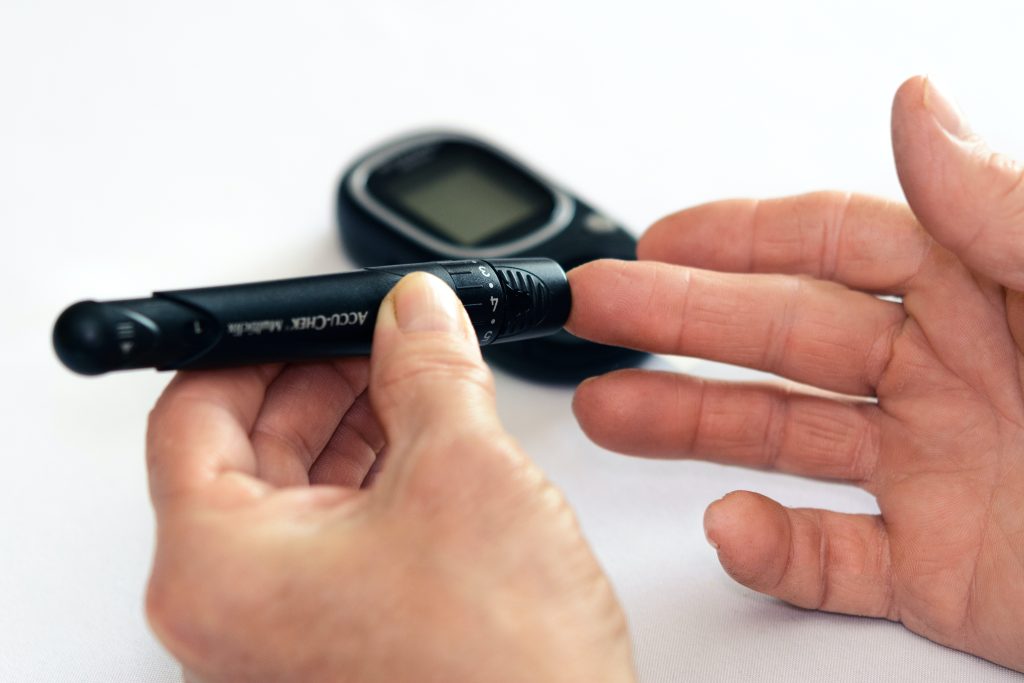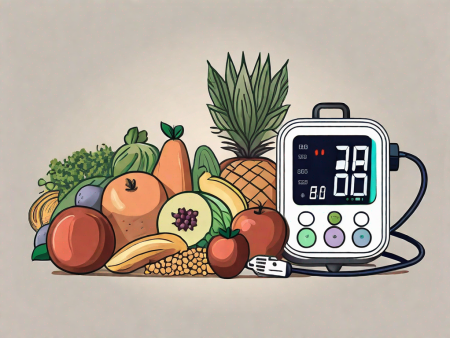Discover the various screenings available for diabetes diagnosis and management.
What Screenings Are Available for Diabetes Diagnosis and Management?

Do you find yourself frequently running to the bathroom to relieve yourself? Or perhaps you’re constantly thirsty, like a camel in the desert? These could be signs of diabetes, a sneaky little condition that affects millions of people worldwide. But fear not, my friend! There are various screenings available to diagnose and manage this condition, ensuring you can continue living your best life. So let’s dive into the wonderful world of diabetes screenings and explore all the options that await you!
Understanding Diabetes: An Overview
Before we unveil the magnificent screenings, let’s get a grasp on what diabetes is all about. It’s like unraveling the plot of a mystery novel, but with fewer detectives and more glucose. Diabetes is a chronic condition that messes with your body’s ability to regulate blood sugar levels. We’ve got a whole variety pack of diabetes types, each with its own unique quirks and shenanigans.
Now, let’s dive deeper into the fascinating world of diabetes and explore the different types that exist. First up, we have type 1 diabetes, the rebellious teenager of the diabetes family. This happens when your immune system decides to go bonkers and starts attacking the cells responsible for producing insulin, a hormone that helps regulate blood sugar. It’s like a wild rollercoaster ride for your body, with sudden drops and unexpected twists.
Next, we have type 2 diabetes, which likes to kick back, relax, and make it harder for your body to use insulin properly. It’s like a stubborn houseguest who overstays their welcome and disrupts the harmony of your body’s glucose management. Type 2 diabetes is often associated with lifestyle factors such as poor diet, lack of exercise, and excess weight. It’s a complex dance between your body’s insulin production and its ability to effectively utilize it.
Lastly, gestational diabetes can occur during pregnancy, throwing an extra curveball into the mix. It’s like a surprise guest at a party, popping up unexpectedly and demanding attention. This type of diabetes affects pregnant women and usually resolves after giving birth. However, it’s essential to manage it properly during pregnancy to ensure the health of both the mother and the baby.
Now that we’ve explored the different types of diabetes, let’s move on to understanding the symptoms and risk factors associated with this condition. How do you know if diabetes is trying to sink its teeth into you? Keep an eye out for signs like frequent urination, unquenchable thirst, weight loss, fatigue, and blurry vision. These symptoms can be like warning signals, alerting you to the possibility of diabetes lurking in the shadows.
But that’s not all. Diabetes has its own set of risk factors that can increase your chances of developing the condition. If you have a family history of diabetes, it’s like having a genetic predisposition, a hereditary clue that diabetes might be waiting in the wings. Additionally, if you’re on the chubbier side or lead a sedentary lifestyle, you might be at a higher risk. It’s like the pieces of a puzzle coming together, painting a picture of potential vulnerability.
Understanding the different types of diabetes and recognizing the symptoms and risk factors is crucial in managing and preventing this condition. It’s like equipping yourself with knowledge and tools to navigate the intricate maze of diabetes. So, let’s continue our journey and delve deeper into the world of diabetes screenings and treatments.
The Importance of Early Diabetes Screening
Detecting diabetes early is like catching a villain before they wreak havoc. It’s crucial for your overall well-being, and it can prevent complications down the line. So let’s look at why early diabetes screening deserves a standing ovation!
Diabetes is a chronic condition that affects millions of people worldwide. It occurs when the body either doesn’t produce enough insulin or cannot effectively use the insulin it produces. Insulin is a hormone that helps regulate blood sugar levels, and when it’s not working properly, it can lead to a range of health problems.
Benefits of Early Detection
You know what they say, “Early bird catches the worm!” Well, early detection of diabetes catches a whole bunch of benefits too. By identifying diabetes in its early stages, you can take faster action to manage your condition, prevent or delay complications, and make those blood sugar levels do a delightful dance.
When diabetes is detected early, individuals have the opportunity to make lifestyle changes that can significantly improve their health. This may include adopting a healthier diet, increasing physical activity, and monitoring blood sugar levels regularly. These proactive measures can help keep blood sugar levels in check and reduce the risk of developing complications.
Additionally, early detection allows for early intervention. Healthcare professionals can prescribe appropriate medications, such as insulin or oral medications, to help regulate blood sugar levels. They can also provide education and support to help individuals understand their condition and manage it effectively.
Potential Complications of Late Diagnosis
Picture this: you’re wandering through a beautiful meadow when suddenly, out of nowhere, a giant boulder comes crashing down. Ouch! Late diagnosis of diabetes is like that boulder, bringing potential complications like heart disease, kidney damage, nerve problems, and even vision loss. Yikes! Don’t wait for the boulder—get screened early!
Diabetes is a complex condition that affects multiple organs and systems in the body. When left untreated or undiagnosed for an extended period, it can lead to serious complications. High blood sugar levels can damage blood vessels, increasing the risk of heart disease and stroke. It can also cause nerve damage, leading to problems with sensation and movement.
Furthermore, diabetes can affect kidney function, leading to kidney damage or even kidney failure. The eyes are also vulnerable to the effects of diabetes, with the condition known as diabetic retinopathy being a leading cause of vision loss in adults.
By delaying diabetes screening, individuals are essentially gambling with their health. The longer diabetes goes undetected, the greater the risk of developing these complications. Early screening can help identify the condition before it has a chance to wreak havoc on the body, allowing for timely intervention and management.
In conclusion, early diabetes screening is of utmost importance. It provides an opportunity to take control of one’s health, make necessary lifestyle changes, and prevent or delay the onset of complications. Don’t wait for the villain to strike—get screened early and give yourself the best chance at a healthy and fulfilling life!
Different Types of Diabetes Screenings
Now comes the exciting part—the actual screenings! Just like choosing which ice cream flavor to devour, diabetes screenings come in different delicious varieties. So let’s explore the scrumptious options you have:
Fasting Plasma Glucose Test
If fasting is your superpower, then this test is right up your alley! Before breakfast, you’ll have the pleasure of having your blood drawn. Then you’ll wait patiently, like a noble knight, while the lab examines the sugar levels in your sample. This test is like unlocking a secret door, revealing whether you have diabetes or if your sugar levels are flirting with danger.
But let’s dive deeper into the fascinating world of the fasting plasma glucose test. Picture this: you wake up in the morning, feeling a grumble in your stomach. You resist the temptation to grab a quick bite and head straight to the lab. As the phlebotomist gently inserts the needle into your vein, you can’t help but marvel at the intricate dance of science happening inside your body. The blood sample is carefully collected and sent off to the lab, where skilled technicians analyze it with precision and expertise. They measure the glucose levels, searching for any signs of imbalance. It’s like a detective story, where the clues lie in the numbers, revealing the truth about your health.
Meanwhile, you patiently wait for the results, your mind filled with curiosity and anticipation. Will the numbers be within the normal range, or will they hint at the presence of diabetes? The waiting game can be nerve-wracking, but it’s a necessary step towards understanding your body better. And when the results finally arrive, you’ll have a clearer picture of your health status, empowering you to make informed decisions about your lifestyle and well-being.
Oral Glucose Tolerance Test
Ready to show off your sugar-handling skills? This test will put you to the test, quite literally! After fasting, you’ll chug down a sugary drink filled with enough sweetness to make Willy Wonka jealous. Then, just like waiting for a love letter, you’ll patiently hang around while your blood sugar levels are checked at intervals. This test is a great way to diagnose gestational diabetes or catch type 2 diabetes lurking in the shadows.
Now, let’s step into the world of the oral glucose tolerance test. Imagine yourself sitting in a cozy waiting room, with the anticipation of what’s to come hanging in the air. The nurse hands you a glass filled with a vibrant liquid, resembling a magical potion. As you take your first sip, the sweetness dances on your taste buds, momentarily transporting you to a world of sugary delights.
But this test isn’t just about indulging in a sugary drink; it’s a carefully orchestrated performance of your body’s response to glucose. As time passes, your blood is drawn at regular intervals, capturing snapshots of your sugar levels. It’s like a symphony, with each blood draw representing a different movement, revealing the intricate harmony between your body and glucose. The technicians in the lab analyze these snapshots, searching for any irregularities or signs of diabetes.
Throughout the test, you might experience a mix of emotions—curiosity, nervousness, and even a touch of excitement. It’s a journey of self-discovery, a chance to understand how your body processes sugar and whether there are any hidden surprises. And when the final results are in, you’ll have a deeper understanding of your body’s unique response to glucose, equipping you with knowledge to make informed decisions about your health.
Random Plasma Glucose Test
Are you more spontaneous than a surprise trip to Disneyland? Then get ready for this random glucose test! No fasting required, just a spontaneous blood draw whenever you feel like it. We’ll check your sugar levels to see if you’re sailing smoothly or if stormy weather is on the horizon.
Now, let’s explore the world of the random plasma glucose test. Imagine yourself going about your day, with no restrictions on when or what you can eat. Suddenly, you decide to seize the moment and head to the clinic for a spontaneous blood draw. It’s like a spur-of-the-moment adventure, where you embrace the unpredictability and let your body reveal its secrets.
As the nurse prepares to draw your blood, you can’t help but feel a sense of freedom. No fasting, no waiting—just an instant snapshot of your sugar levels. It’s like capturing a fleeting moment, freezing it in time to gain insight into your body’s current state. The blood sample is swiftly collected, and off it goes to the lab, where skilled technicians analyze it with precision and care.
While you wait for the results, you might find yourself reflecting on the beauty of spontaneity. Life is full of surprises, and this test embraces that spirit. It’s a reminder that our bodies are constantly changing, and by embracing the unexpected, we gain a deeper understanding of our health. So whether the results reveal smooth sailing or stormy weather, you’ll have a snapshot of your body’s current sugar levels, helping you navigate the journey towards optimal health.
Interpreting Diabetes Screening Results
So, you’ve faced the screenings, and you’re eagerly waiting for the results. But what do these fancy numbers and abbreviations mean? Let’s decipher the secret code together!
Understanding Your Test Results
Healthy sugar levels will make your heart jump with joy! If your results are within the normal range, take a bow, my friend—you’re doing amazing. But if those numbers veer into the prediabetes or diabetes territory, don’t worry. We’ve caught it early, and together we’ll tame the diabetes dragon!
What Do Abnormal Results Mean?
If your results raise an eyebrow, it’s time to put on your detective hat and uncover what’s really going on. Abnormal results could point to prediabetes, meaning your sugar levels are high but not quite at the diabetes stage yet. Or it could be full-blown diabetes, in which case we’ll get you all the support and tools you need to manage it like a pro.
Managing Diabetes Post-Diagnosis
Now that you’ve tackled the screenings and deciphered the results, it’s time to jump into action and manage diabetes like a superhero saving the day!

Lifestyle Changes for Diabetes Management
Take a deep breath and get ready for some lifestyle adjustments. Don’t worry, it’s not as scary as it sounds! Embrace a healthy eating plan, stay active like a dancing penguin, and monitor those sugar levels diligently. With a dash of self-care and a sprinkle of discipline, you’ve got the recipe for managing diabetes on lockdown!
Medication and Treatment Options
If lifestyle changes aren’t enough to kick diabetes to the curb, fear not—we have reinforcements! Medications such as oral pills or insulin injections may swoop in to save the day. Your healthcare team will guide you through the options and work together to find the best plan tailored just for you.
So there you have it—your ultimate guide to the magnificent world of diabetes screenings. Remember, early detection is the key to keeping diabetes at bay and living your best, sugar-controlled life. Embrace the screenings, manage diabetes like a boss, and never forget: you’re in charge of your health, and you’ve got this!






